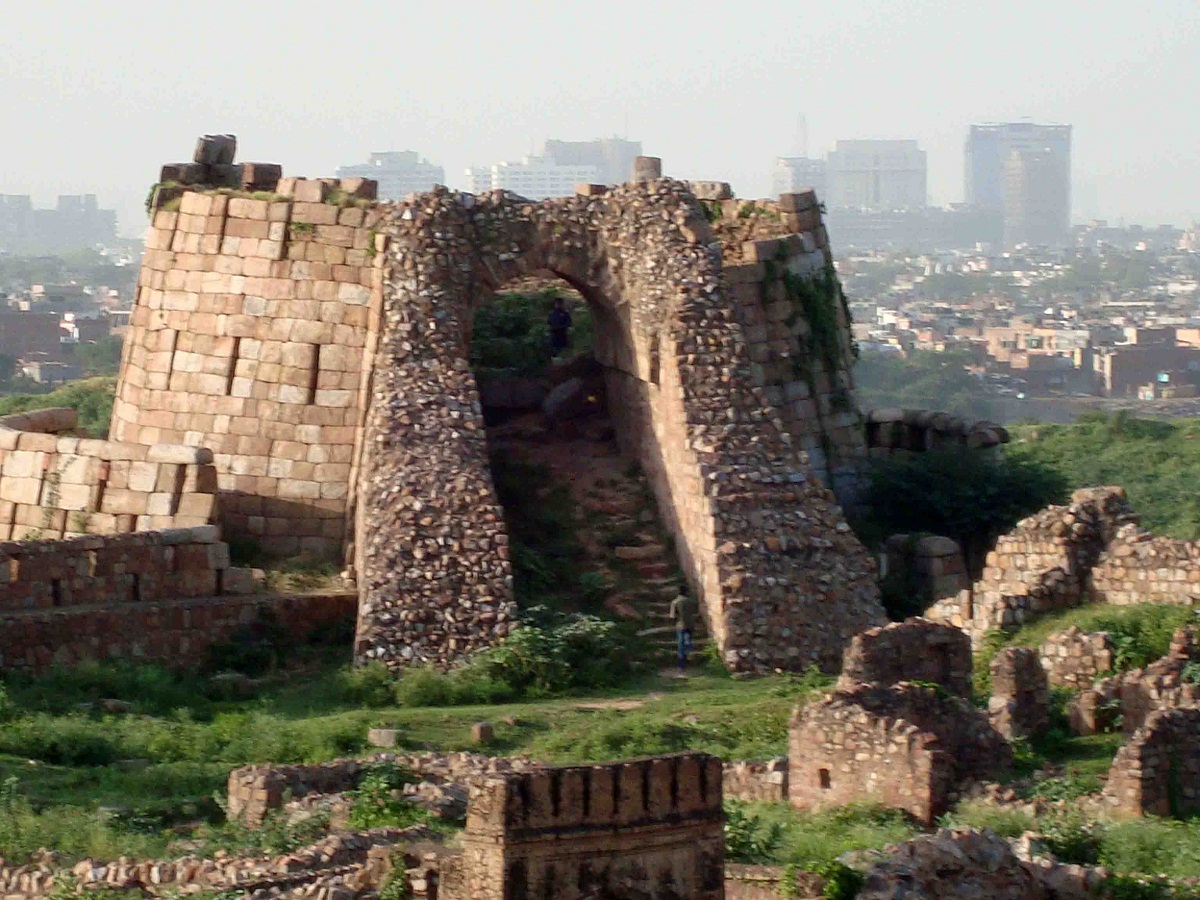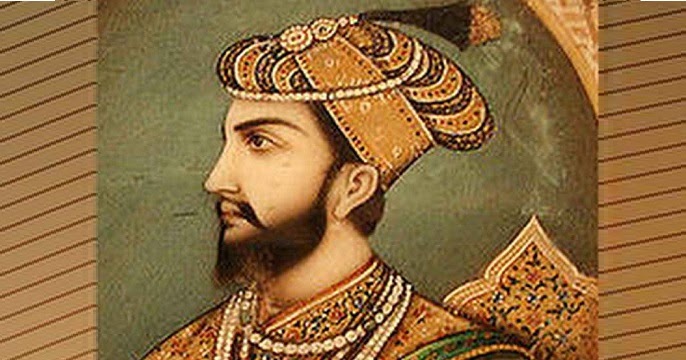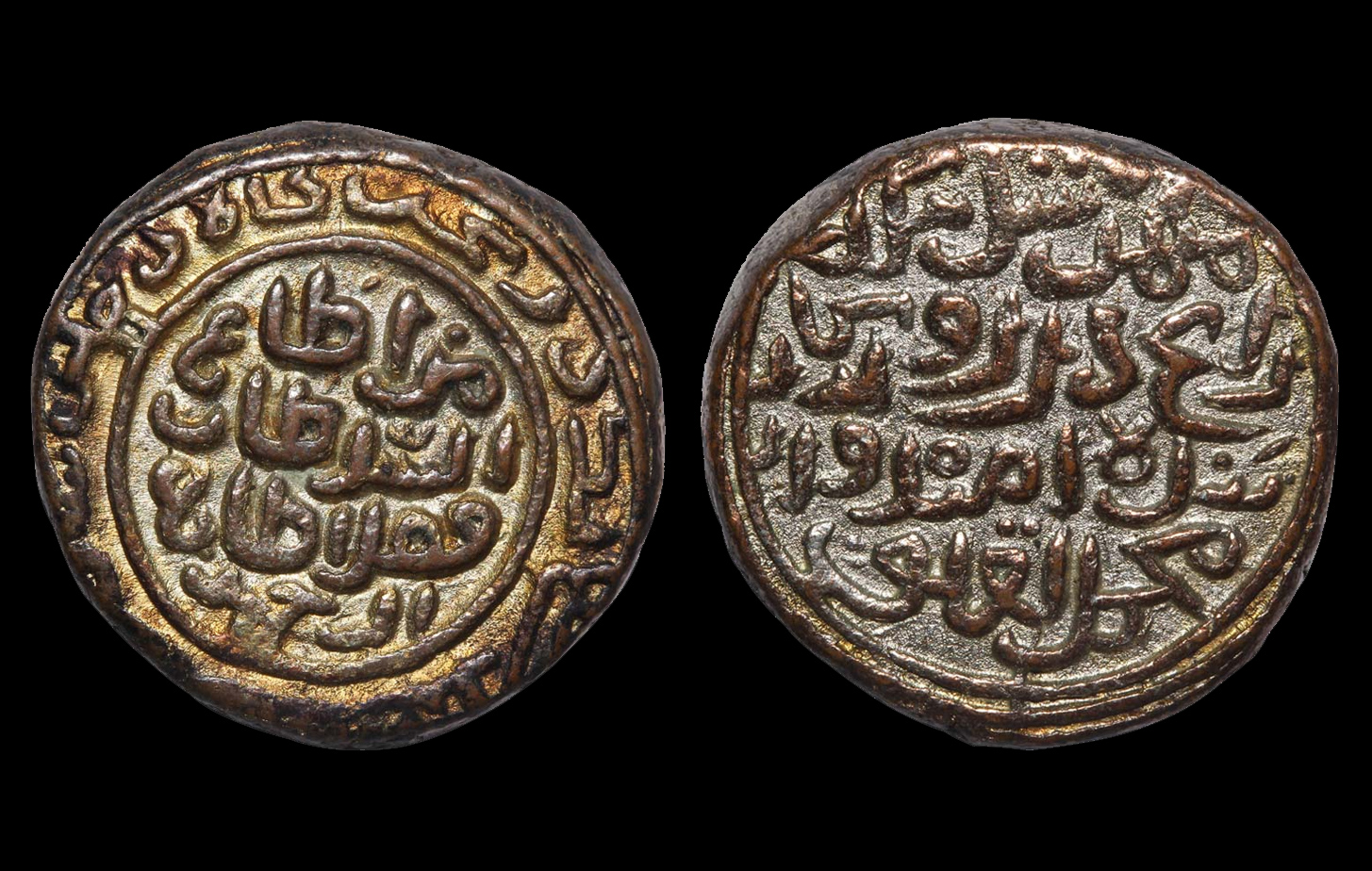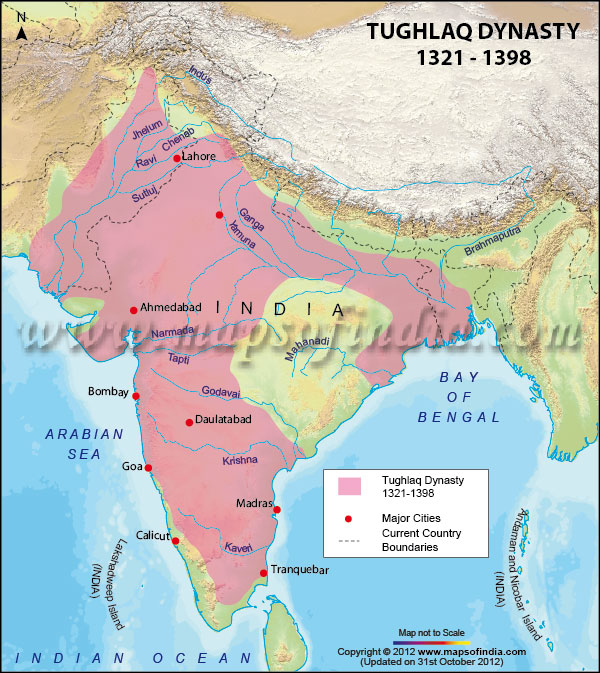The Tughlaq Dynasty also referred to as Tughluq or Tughluk dynasty was a Muslim dynasty of Turko-Indian origin that ruled over the Delhi sultanate in medieval India. Its reign started in c.1320 CE in Delhi when Ghazi Malik assumed the throne under the title of Ghiyath al-Din Tughluq. The dynasty ended in c.1413 CE. The dynasty expanded its territorial reach through a military campaign led by Muhammad bin Tughluq and reached its zenith between c.1330 CE and c.1335 CE. Its rule was marked with torture, cruelty, and rebellions, resulting in the rapid disintegration of the dynasty’s territorial reach after c.1335 CE.
Ghiyasuddin Tughlaq (c. 1320-1325 CE)
He was the founder of the Tughluq dynasty and the first Sultan to take the title of the Tughlaq dynasty. First Sultan to start irrigation works. He built a strong fort called Tughlaqabad near Delhi. He sent his son, Jauna Khan/Mohammad Bin Tuglaq, to re-establish authority in Warangal (Kakatiyas) and Madurai (Pandayas).

He had a troublesome relationship with the Sufi saint, Sheikh Nizamuddin Aulia. Died due to the collapse of a wooden structure; some scholars like Ibn Batuta believe that his death was an act of sabotage orchestrated by his son Jauna Khan.
Mohammad Bin Tughlaq (c. 13251-1351 CE)

He is considered an ill-fated idealist owing to his ambitious schemes and novel experiments, which ended in miserable failures because they were all ahead of their times. Ziauddin Barani mentions his five experiments/ campaigns:
Transfer of Capital
In year c.1327-28 CE Mohammad Bin Tughlaq transferred his capital from Delhi to Daulatabad (Devagiri). The transfer was carried out in two groups; at first, the members of the royal family were shifted, later on, others were asked to move. Sultan wanted to punish the resident of Delhi who used to write abusive letters to Barani but this did not appear to be correct.

Based on other available sources, modern historicals believe that capital was the transfer from Delhi to Daulatabad because: Sultan wanted a capital far away from Delhi so that it could remain safe from Mongol invaders. Delhi was threatened by Mongol invaders. Sultan followed a policy of direct control over peninsular India so he wanted his capital in Deccan so that the new annex territories could be administered effectively.
Extent of Transfer
According to Barani, every resident of Delhi was ordered to move to Daulatabad. Modern historian believes that only the peoples who were from the royal family, officials, courtier Sufi Saints, the scholar asked to move Delhi to Daulatabad. The common people living in people were not disturbed.
Problems caused by Capital Transfer Project
According to Barani, the people of Delhi suffered immensely due to that project. He emphasized that half of the people died while going to Daulatabad. Many lost their lives in Daulatabad suffering from homesickness, summer, plague, and many died while coming back. The people suffered due to the ill-fated behavior of the Sultan but the cause of the fact that the transfer was carried out in April when the temperature was quite high.
Bringing back of Capital to Delhi
According to Barani, Sultan realized his mistake & he ordered the people to go back to Delhi. The closer examination of circumstances in which capital was brought to Delhi during c. 1335-36 CE reveals that the decision was the outcome of changed ground level geopolitical circumstances.
Deccan was destructed by a severe epidemic of plague. Complete disorder developed in peninsular India. A large part of the Sultan’s army was died due to the plague. The provincial governors declared their Independence. In 1335, Madurai declared Independence, and in 1336, Vijaynagar was founded by Harihara & Bukka. Sultan was not in a position to reconquer these territories immediately. Under these circumstances, it meant to have capital at Daulatabad so Sultan moved back to Delhi.
Impact of Capital Transfer Project
According to Barani, the city of Delhi lost its prosperity, the people died in large numbers. The failure of this project had definitely detached the prosperity of Delhi but it’s difficult to accept Barani’s exception that the people of Delhi have turned against Sultan. Irrespective of the fact the project had failed, it produced some positive consequences.
A large number of Muslim families & Sufi Saints had decided to stay back at Daulatabad. Their presence in Deccan gives the way to the cultural integration of North & Southern India.
Token Currency
In 1329 CE, Sultan Mohammad Bin Tughlaq introduced token currency, made of copper/pure quality bronze to replace the silver and gold coins. These token coins were having a face value of silver & gold coins. It was modeled based on the Chinese example (Kublai Khan issued paper money in China). According to Barani, the token currency was intro because Sultan wanted to preserve gold & silver. He wrote that Sultan was facing a scarcity of silver.

The closer object clearly reveals that there was no shortage of precious matter. Barani himself wrote that when the circulation of token currency was stopped, Sultan paid people back in gold & silver. The token currency was the product of the innovative mind of Sultan Mohammad Bin Tughlaq. It was not the outcome of any compulsion as such.
Cause of Failure
The token currency expansion failed, Barani said the house of every Hindu was converted into a (Taksal) & marked got plugged with the forged coin. The merchants & traders refused to accept Token Currency, the trade & commerce come to stand.
Barani blamed Mohammad Bin Tughlaq for the failure of an expansion. Failed because the state couldn’t maintain its monopoly over maintain of coins. The design of Token Currency was too simple & these coins could be easily duplicated. The failure of this project was not the outcome of any mistake on part of the Sultan, the project fails because of bureaucracy. The token currency expansion of Mohammad Bin Tughlaq was far ahead of his times but this statement was not correct because Token Currency was already in circulation in China & Persia at that time.
Impact of failure
Trade & commerce got affected seriously because of the failure of this expansion. The merchants & traders stopped excepting the token coins. The rebellious elements used Token Currency to purchase weapons & horses as a result of that the state had to face serious political instability.
The state suffered a loss of revenue because the peasant used Token Currency to pay the land revenue. Barani’s states that the treasury got exhausted when the Sultan stopped the circulation of Token Currency that didn’t appear to be correct because the Sultan raised a large army around the same time when the circulation of Token Currency stopped. The mountain of coins mentioned by Barani near the gate of Sultan’s palace was perhaps the mountains of those coins those were rejected by state official when people paid back in gold & silver coins in their token coins.
Khurasan Expedition (c.1332-33 CE)
Khurasan was located in Central Asia. The kingdom of Khurasan was crossing through a phase of political instability. A situation of civil war had arisen in Khurasan and Iraq. Sultan Mohammad Bin Tughlaq planned to conquer Khurasan and Iraq due to this reason.
According to Barani, the expedition planned because Sultan Mohammad Bin Tughlaq was flattered by Khuraani Nobel who had taken shelter in his court. For Nobel gifts & privileges from Sultan, these Nobel praised him beyond reality. Sultan came under their influence & planned Khurasan expansion.
According to Barani, a large army of 370000 was raised; the soldiers were paid advanced for 1 year. Mohammad Bin Tughlaq was a very powerful ruler; he had immense resources at his disposal. His decision to plan the conquest of Khurasan was well thought out. Khurasan was passing through political disorder; there was nothing in planning to conquer it.
According to Barani, Sultan realized his mistakes and he abandoned the campaign. In reality, it was abounded because of changed geopolitical circumstantial. When the campaign was planned, the powerful ruler Abusaid established his rule over Khurasan; under these circumstances, the execution of the campaign could have been a disaster.
Impact
According to Barani, Sultan dismissed the newly raised army after six months the soldier lost their employment & they got converted into brigandage (robbers). As a result of this, states were started facing serious revolts. Barani also emphasized that Sultan was made offers to take back advanced salary by soldiers, as a result, suffered serious financial loss.
The Barani’s station about Khurasan expansion appeared far feast because the soldiers demobilized by Sultan were without any employment 6 months back. The decision of the Sultan was not to take back advanced salary paid to soldiers, reflected his strength, not weakness. It was an indication of the plan trophic outlook because finally, the soldiers were his subject.
Qarachill (Kumaon Hills) Expedition
Qarachill was a small Hindu kingdom located in the Himalayas between India & China. It was independent of the authority of Delhi. Sultan Mohammad Bin Tughlaq planned its conquest as he was a very powerful ruler. The expedition was directed by religions as some historians try to portrait.
A large army of 10000 cavalrymen was sent by Sultan to subjugate the kingdom of Qarachill. The campaign was successful because the king of Qarachill accepted the suzerainty of Delhi. But when the royal army returning the rainy season set inland sites & other challenges resulted in the loss of a major part of the Sultan army.
Royal soldiers were attacked by locals as a result, the challenge had got intensified. Barani said only 10 soldiers returned & they were also executed by the order of the Sultan. It’s difficult to accept the Barani view but a clear loss was taken place. This loss affected the military strength & political stability of the Sultanate. The campaign wasn’t a failure as some historians tried to portrait based on reforms of Barani because contemporary resources found that the king of Qarachill sent the revenue for many years.
Increase in taxation in Doab Region (c.1333-34 CE)
Sultan tried to augment the resource by increasing taxes in the Doab region. There was no unanimity on the amount of increase. Barani said taxes were increased 10 to 20 times. Badayuni said taxes doubled. Tarik-i-Mubarakshahi (Yayha-bin-Ahmad) said taxes were increased by 20 times & peasants were asked to pay Grahi & Chari as well.
Modern historians believe that the increased rate of loss was 50% of produce along with these peasants were asked to pay Grahi & Chari.
Consequences
The taxation increased project failed majorly. Agriculture got rayon the peasants abounded the villages & escaped into the forest. As a result of this the amount of the peasant who lost their agriculture & had left villages got converted into rebels, as a result, Sultanate faced serious political un-stability.
The project failed because the Sultan used officially decreed (order) yield at official decreed prices in the collection of Land Revenue. The biggest failure of the project was a natural calamity. When the rate of taxes was implemented, the Doabs region structured by social famine lasting 8 years. The official used state power to force peasants to pay Land Revenue in rate. Peasant suffered immensely & agriculture got ruined results. Unable to pay taxes at the new rate peasant’s escape to the forest.
Response of Sultan
The suffering of peasants & destruction of agriculture was not due to Mohammad Bin Tughlaq when he got to know the problem of peasants. The Sultan gave a huge amount of special loans known as Soandhar to peasants to restart their agriculture activities.
State assistance was provided to purchase seeds, implements & animals but it took many years before to normally could return to the Doab region.
Model Agriculture Farm (c.1337-38 CE)
After being failed in his attempt to augment his resources in the state by increasing taxes in the Doab region, Sultan Mohammad Bin Tughlaq decided to improve the financial condition of the state by bringing more land under the plow. The Department of agriculture (Diwan-i-Amir kohi) was established. It was giving the responsibility of carrying out the extension of cultivation.
Implementation of the project
A piece of land measuring about 60 miles x 60 meters was selected. The amount of 70 lac Tanka was invested over a period of the system. This amount was distributed among peasants so that new land could be brought under the plow.
Cause of failure
Barani said the project failed completely & not a single inch of new land could be brought under plow. The project failed because officials misappropriated the money. There was nobody to check them. This project failed because the wrong piece of land was selected by the officials.
The purpose was to bring fertile land line fellow (uncultivated) under plow but the piece of selected was completely barren. Doabs region was just recovering from massive, famine as a result, peasant, used to amount advance given to personal needs.
New Orientation
Monarchical despotism was carried to climax the most powerful Sultan in Delhi Sultanate. Tughlaq created heterogonous nobility appointed non-Turk Muslims non-Muslims as well as Hindu in his nobility. Tughlaq emphasizes on merit in the appointment under the state. His attitude was nondiscriminatory.
Sultanate emerged as secular under Muhammad Bin Tughlaq he used to celebrate the festival Holi. He tried to bring more lands under cultivation model agriculture area. He gave loans to peasants to purchase seeds, animal implements & to big wells.
Increased cultivation of superior crops
According to Barani, the cultivation of wheat was increased than millet grains. The cultivation of sugarcane was increased in those areas where wheat was being cultivated. The cultivation of fruits was increased where sugarcane cultivated.
These initiatives couldn’t produce much success because of his project to carry out the extension of cultivation & the loan granted to the person when their crop had damaged & agriculture had got ruined due to increasing the burden of taxation & long period of famine.

